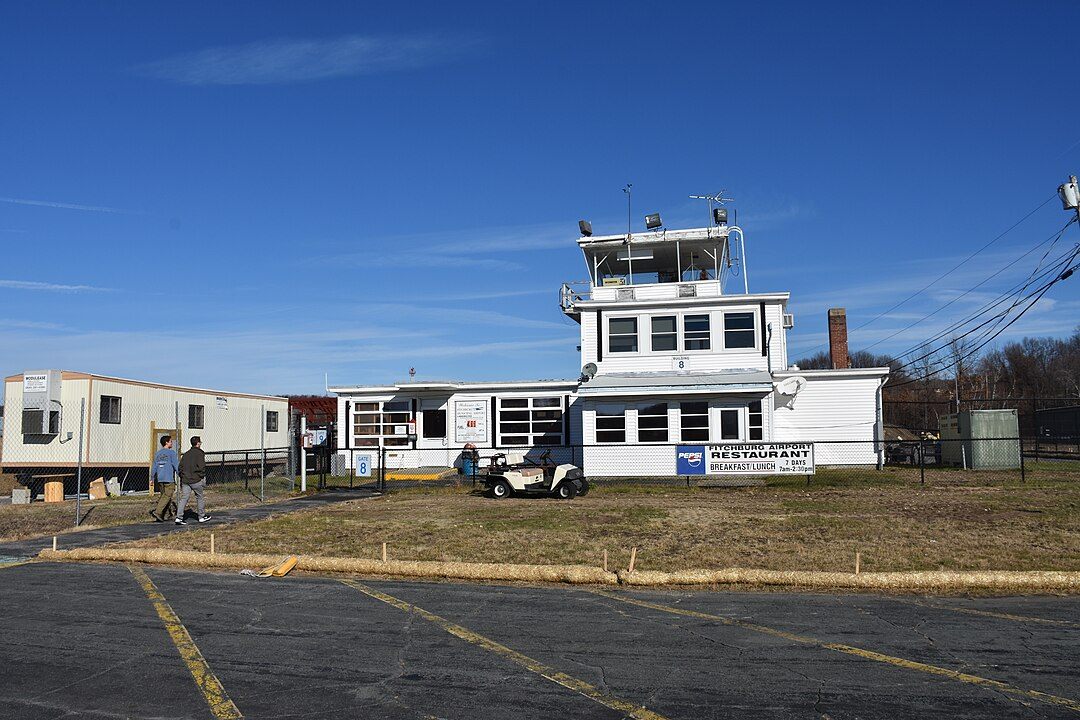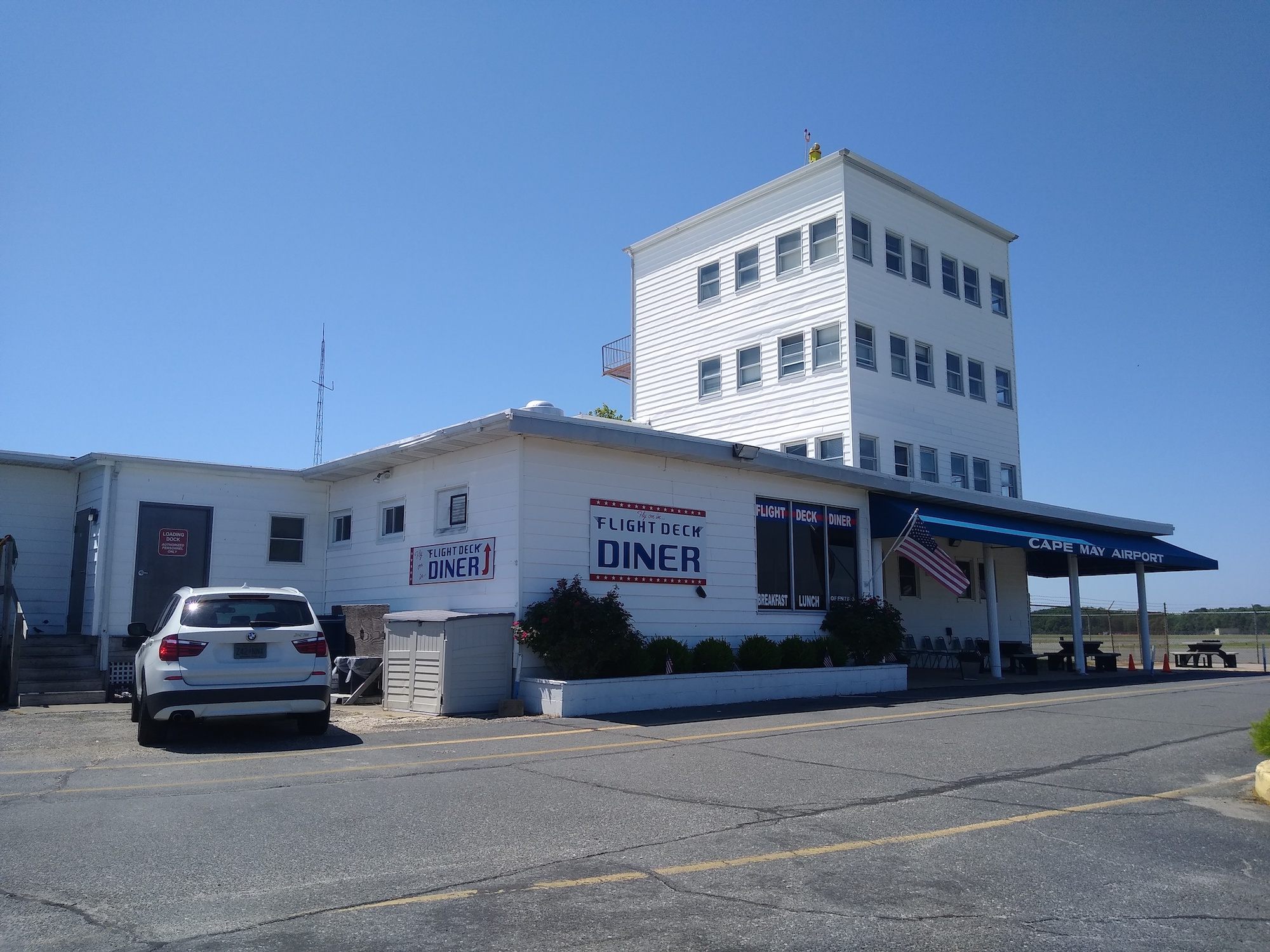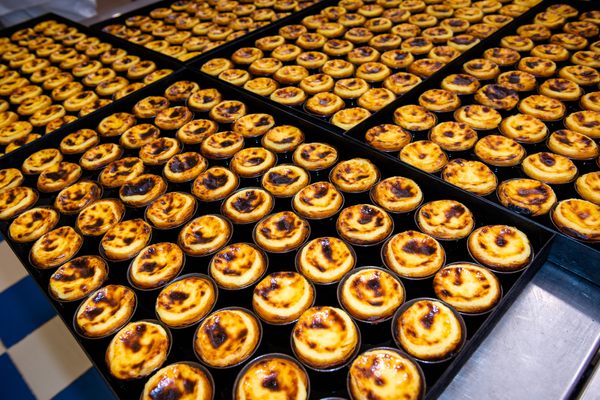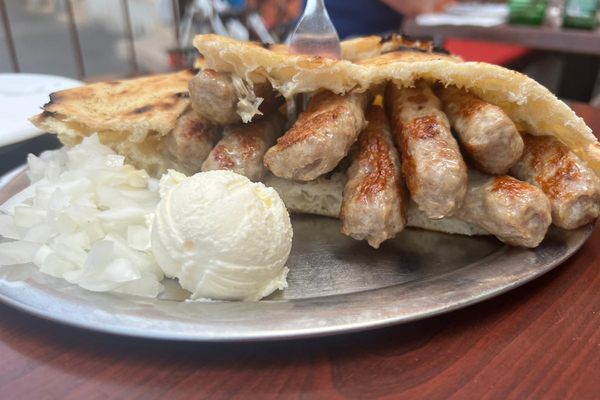The Fly-In Restaurants on America’s Airfields
Both pilots and planespotters seek out these aviation-themed eateries.
THIS ARTICLE IS ADAPTED FROM THE JULY 8, 2023, EDITION OF GASTRO OBSCURA’S FAVORITE THINGS NEWSLETTER. YOU CAN SIGN UP HERE.
A few years ago, as I was noodling around Google Maps, I spotted a tiny fork-and-knife symbol situated in the middle of what the map denoted as a small airfield.
Perplexed, I tapped the icon, and it displayed rave reviews for a barbecue joint that had been left by locals, pilots, and planespotters. Many of the reviews included incredible pictures: not of the food, but of planes taking off and landing, snapped from inside the restaurant.
There are lots of these airfield restaurants across the United States. I found this out when I went down an online rabbit hole and found sites such as Fly2Lunch and forums compiling lists of the best restaurants to visit near or within small airfields. Many were aviation-themed, and functioned as meeting spots for both planespotters and pilots flying in from all over.
Today, your pilot on this journey through the country’s airfield restaurants is Bryan Peetz. Peetz flies a Van’s RV-10, builds flight training software for Boeing, and is passionate about both food and flight. We discussed the cuisine of airfield restaurants, why they exist, and the truth behind the “$100 hamburger.”

Q&A With Bryan Peetz
Anne Ewbank: First things first. What is the “$100 hamburger”?
Bryan Peetz: The term “$100 hamburger” has been around forever. It’s a way of saying what it costs to go get a hamburger when you fly out somewhere. It’s sort of an inside joke. Going out to dinner in your airplane, you’re not saving any money, but it’s fun.
AE: Why would someone want to travel so far, and spend that kind of money on fuel, just for a meal?
BP: Part of flying is you have to maintain currency. [Pilots regularly perform and log specific tasks to stay eligible to fly.] If you’re going out and just trying to do some practice maneuvering, taking off and landing, or other instrument work, it’s an excuse to go out, do that, have lunch somewhere, and then train on your way back as well.
AE: How would you describe airfield restaurants?
BP: There’s really three kinds of places. There’s the ones that are, no kidding, on the airfield, and then there’s ones that are right next to it, so you can land and walk a couple hundred yards or across the road.
And then there are some places that will come meet you at the airport. They have a little shuttle service, and they’ll pick you up if they know you’re coming.
There’s places that are very aviation-themed, that are built in old hangars or have nearby aviation attractions. A lot of times they have aviation names, like Corsair or BlueHaven. It’s a little underground culture that you know about: places where you can easily just fly in, hop out, and catch lunch or breakfast.
Breakfast fly-outs are pretty darn popular. Those are nice, especially in the summer because you can get out early before it gets hot.
AE: What kind of cuisine would you generally say airfield restaurants serve?
BP: They’re home cooking–type places, or Americana fare. The breakfast places will have omelets or pancakes. A lot of organizations, for fundraisers, will organize a pancake breakfast fly-in. That happens somewhere several times a month in the U.S. People just fly in and have breakfast.
The lunch and dinner places can be simpler fare. Some places have pizzas. Some of them have bar food. A couple of places have buffets. They’ll have a special night, like Friday night will be fish-fry night or all-you-can-eat fish. And other places will have Sunday afternoon chicken.
[Bonnie Cafe] at Mount Vernon, Illinois, runs a buffet. Actually, I was there last night. Some other guy was flying out. I piled in with him. It was chicken night there.

AE: How do people find out about these restaurants?
BP: So if you poke around … your number said California. Are you really out in California?
AE: I really am.
BP: So California is full of smaller “reliever” airports. If you go out to any of those and you poke your head in, there’ll almost certainly be a group of people sitting around a table in the office: flight instructors, or whatever.
You can bring up the same thing. “Hey, where do you guys go to fly around here? Where’s the best $100 hamburger?” And pretty soon you’ll have an argument going.
AE: Can anyone go to these restaurants? Even non-pilots?
BP: They almost all need to have more than just aviators flying in. A lot of them have ramp dining or an outside deck, or something that overlooks the airport. The ones that do that tend to get a lot of more traffic from the nearby town, and that’s what keeps them going.
Gastro Obscura covers the world’s most wondrous food and drink.
Sign up for our regular newsletter.




























Follow us on Twitter to get the latest on the world's hidden wonders.
Like us on Facebook to get the latest on the world's hidden wonders.
Follow us on Twitter Like us on Facebook